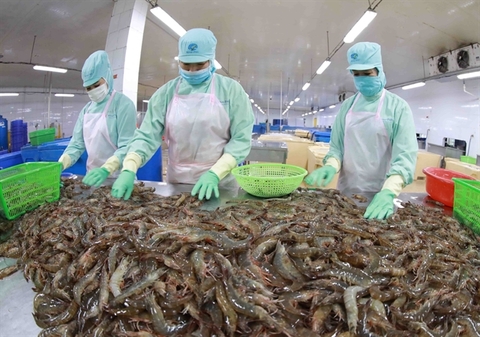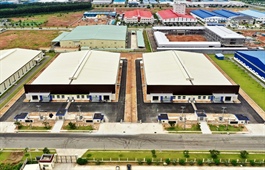Dong Nai enterprises seek new markets amid uncertain global economy
Dong Nai enterprises seek new markets amid uncertain global economy
Although the world economy has not fully recovered from the negative impact of the COVID-19 pandemic and the ongoing conflict between Russia and Ukraine, export turnover of southern Dong Nai Province hit US$19.3 billion during the first nine months of this year, surging 20.17 per cent over the same period last year, according to data of the General Statistics Office.

Meanwhile, the provincial index of industrial production (IIP) increased by more than 7.8 per cent over the same period last year.
Although the index declined in the third quarter of 2022 compared to the first two quarters of the year, businesses still believe that in the fourth quarter of this year, production will recover.
Sectors recording high export growth compared to the same period last year included footwear, iron and steel products, textile and garments, and machinery, equipment, tools and spare parts.
The main export markets of Dong Nai are the United States, Japan, China, the Republic of Korea and some European countries.
A representative of the provincial Department of Industry and Trade said that from the middle of 2020 and through 2021, enterprises in Dong Nai were severely affected by the COVID-19 pandemic, forcing some companies to suspend production which hurt export turnover.
Since the beginning of this year, as the pandemic was brought under control, businesses had quickly restored production and increased their exports. This was an optimistic sign, reflecting that businesses were producing a larger amount of goods and had reconnected with customers in the world market, the official said.
Despite achieving impressive growth, experts believe that export businesses will face many difficulties such as global inflation, tightening monetary policy and a growing cost-of-living crisis in many of the country’s export markets.
Nguyen Duy Hung, Vice President of the Dong Nai Import-Export Association, said Viet Nam was heavily dependent on imported raw materials and fuels.
The selling price of a US dollar at banks had increased by nearly 5 per cent against the VND this year to beyond VND24,000.
Manufacturing activity grew at a slower pace as rising raw material costs and a worsening global outlook weighed on corporate sentiment.
While supply disruptions might have run their course, local exporters were also suffering from a slump in global demand as consumers tightened their spending due to high inflation.
The decline in demand from developed countries' markets, coupled with other difficulties in shipping and raw material supply, would continue to have adverse effects on exports.
Currently, Dong Nai's businesses were making efforts to find new markets and make up for the shortage of orders from traditional markets.
Recently, Dong Nai organised a trade fair with Australian enterprises in the sectors of handicrafts, apparel - footwear, agricultural products and food.
So far, two enterprises from the province had signed contracts with Australian enterprises.
Besides the foreign market, businesses also needed to focus on the domestic market, experts said.
In recent years, foreign-invested enterprises accounted for more than 75 per cent of the province’s export turnover, with the remainder belonging to non-state and State-owned enterprises at 23 per cent and 2 per cent, respectively.
Key export items of non-state enterprises included textiles, footwear, wooden products, coffee and pepper.
Nguyen Thi Hoang, Deputy Chairman of the provincial People’s Committee, said since the beginning of the year, the province had strengthened trade promotion to connect foreign enterprises in Dong Nai with domestic enterprises in the same field to cooperate and provide products for each other.
Many enterprises had found a source of domestic raw materials, which had reduced imports allowing Dong Nai's trade surplus to increase and its trade deficit to decrease.
It was expected that in 2022, Dong Nai would have a trade surplus of more than US$5 billion, which would be a new record of the province.






















